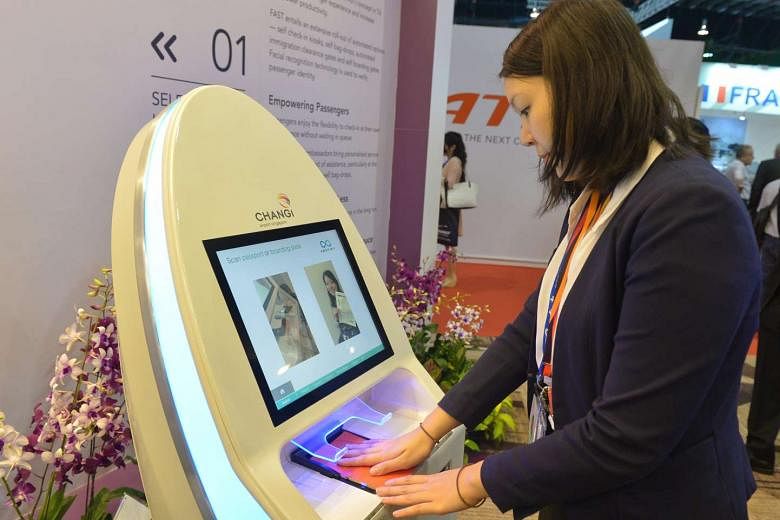At Changi Airport, the robots are starting to take over.
Automated vehicles and robotic arms work with humans to prepare in-flight meals. Instead of making staff walk to and from the meal assembly belt and chiller to collect food items, in-flight caterer Sats now uses automated guided vehicles.
This has helped the ground handling firm cut total preparation time for an airline meal tray by about 40 per cent.
Changi's other ground handler, Dnata, has also turned to automation and technology.
The move has been necessary amid a manpower crunch and rising labour costs that have also affected aerospace firms like SIA Engineering and ST Aerospace.
-
Key sector
-
• The aviation industry accounts for 6 per cent of Singapore's gross domestic product and employs an estimated 55,000 people.
• Changi Airport handled a record 55.4 million passengers last year - 2.5 per cent higher than in 2014. The number of aircraft take-offs and landings increased by 1.4 per cent to 346,330.
• Between October and December, SIA's operating profits almost doubled to $288 million, while net profit rose 35.5 per cent to $275 million.
• The Aviation Development Fund, launched in 2010 with $100 million to support the industry's productivity plans, was renewed for another five years in April last year with a fresh $160 million injection.
Singapore's aviation industry is facing challenges from many fronts.
For one, Changi is up against unrelenting competition from airports in Kuala Lumpur, Bangkok, Hong Kong and South Korea, just to name a few.
Singapore Airlines has its own battles to fight, with Emirates and other Middle Eastern carriers, Cathay Pacific, Qantas - the list goes on.
The stakes are high: The aviation industry accounts for 6 per cent of Singapore's gross domestic product and hires about 55,000 people.
So far, Singapore has managed to beat off the competition and raised efficiency with the use of technology.
Last year, Changi Airport handled a record 55.4 million passengers - 2.5 per cent higher than 2014 - after bouncing back from a weak first half.
The SIA group - SIA, SilkAir, Scoot, Tigerair, SIA Cargo - continues to face pressure on yields, but low fuel prices have been a boon.
Between October and December, SIA's operating profits almost doubled to $288 million while net profit rose 35.5 per cent to $275 million.
Singapore's aviation sector has held its head above water because companies have managed to innovate, and restructure systems and processes where necessary, analysts said.
Sats president and chief executive officer Alex Hungate said the firm's focus is on raising productivity by introducing new technologies and processes, while simultaneously enhancing the skills of its people.
He said: "We have successfully reduced our headcount over the past few years and have been able to share higher bonuses with our people as our operating margin has increased (by 2.9 percentage points for the nine months to Dec 31)."
It is important to remain flexible and adapt to the changing needs of such a dynamic industry, said chief executive of Dnata Mark Edwards.
"We are more agile, more responsive... We have flatter, leaner management structure, which means we are closer to our customers and have the ability to make decisions more quickly," he said.
SIA has moved from focusing on just the full-service premium market to having a presence in the budget segment with long-haul low-cost arm Scoot and its recent takeover of Tigerair, which operates short-haul budget flights.
The Civil Aviation Authority of Singapore and Changi Airport Group have also helped ease some of the burdens faced by the industry.
Among others, there have been cuts in aircraft landing and parking charges, financial support for marketing activities, as well as discounts on warehouse and office rentals.
A $100-million Aviation Development Fund, launched in 2010 to support the industry's productivity drive, has been renewed for another five years with a fresh $160 million injection.


